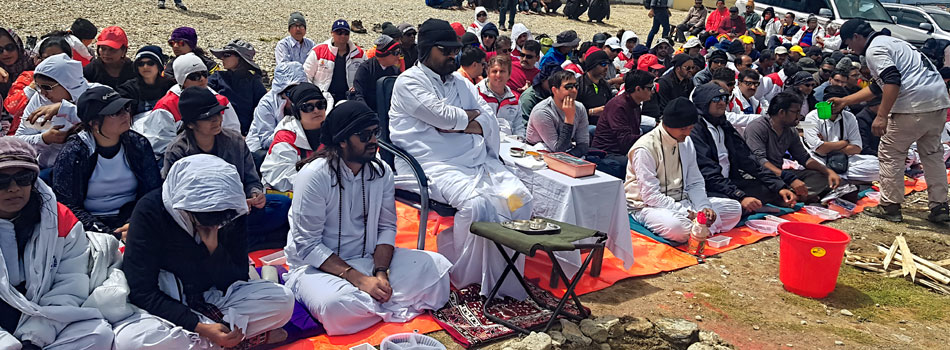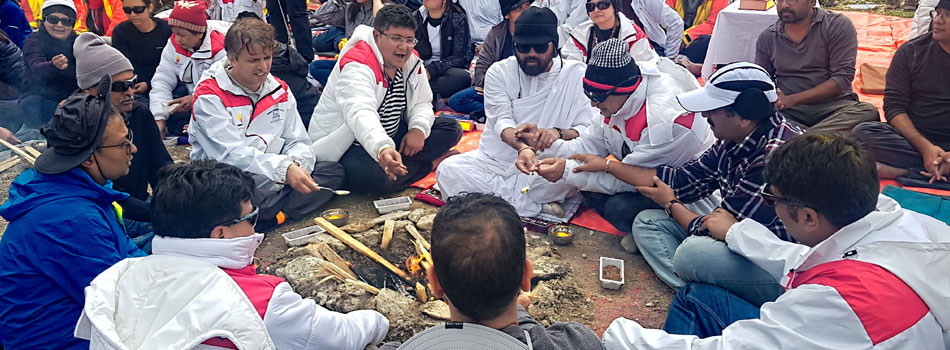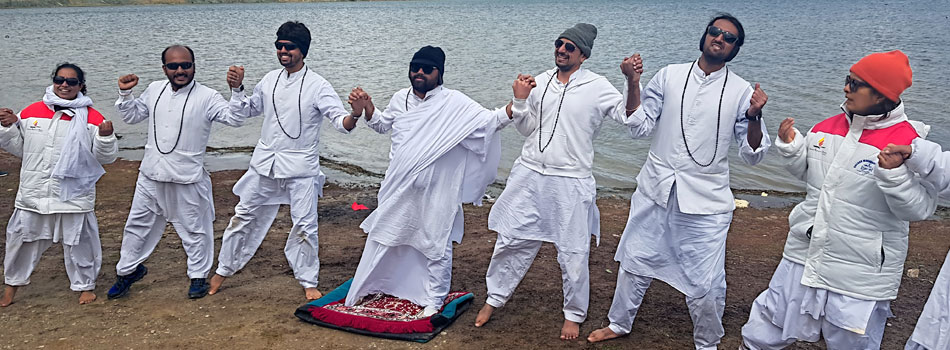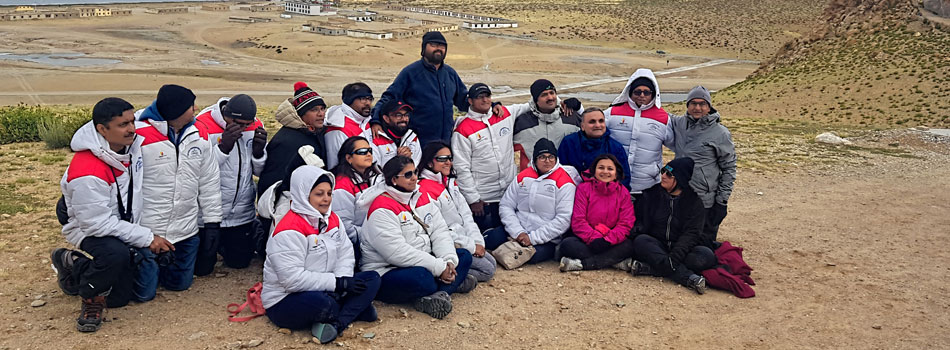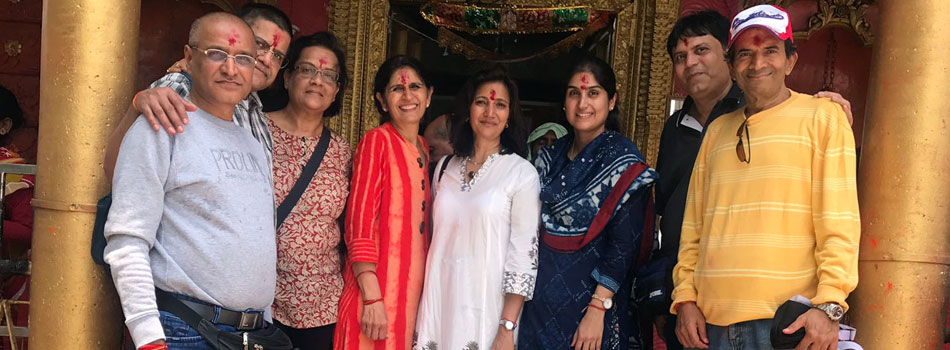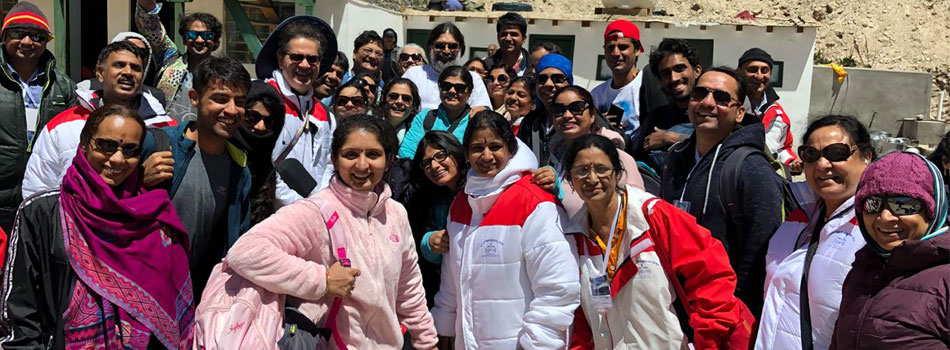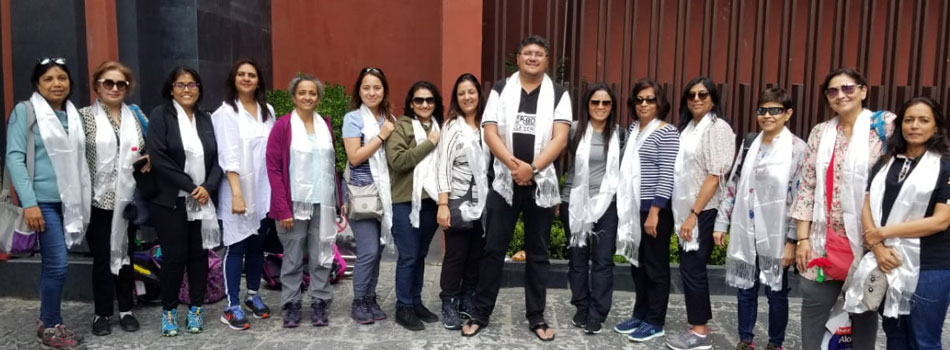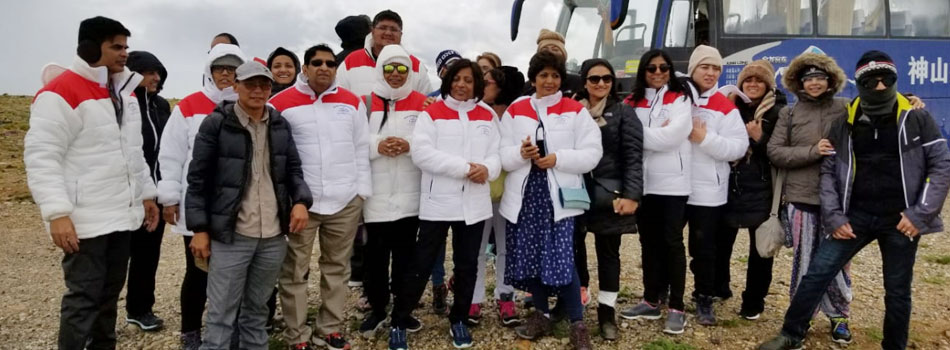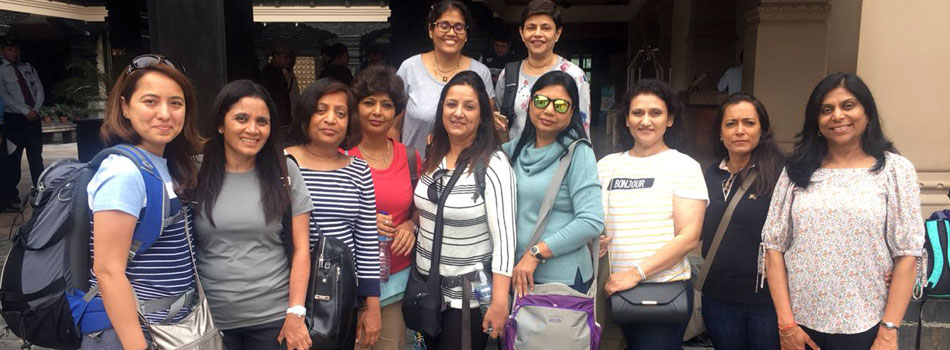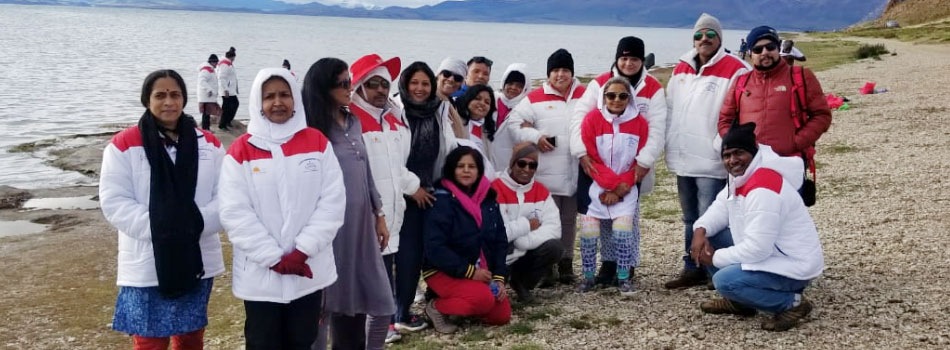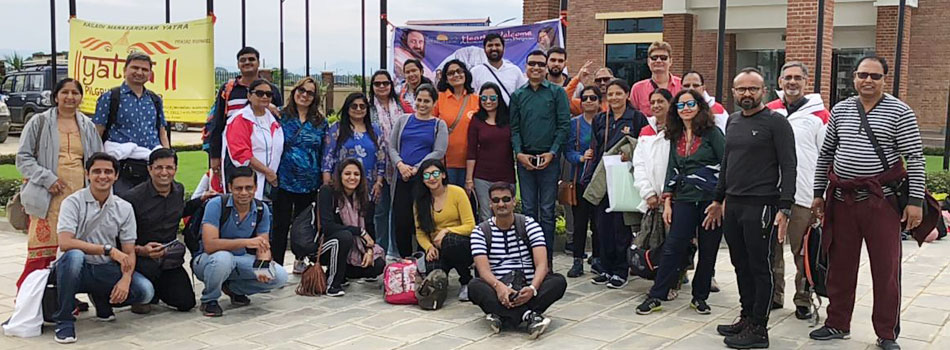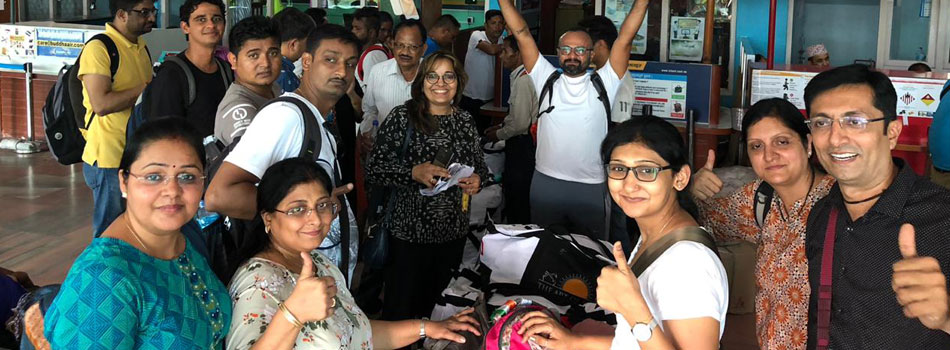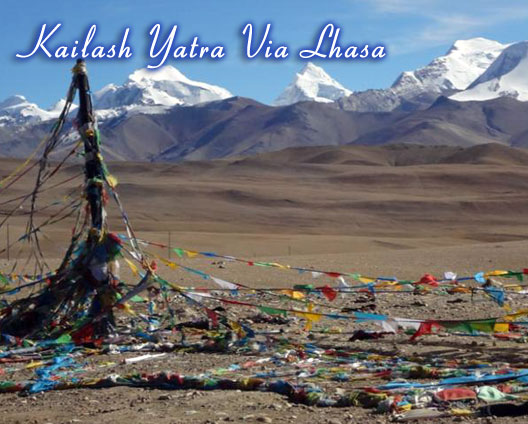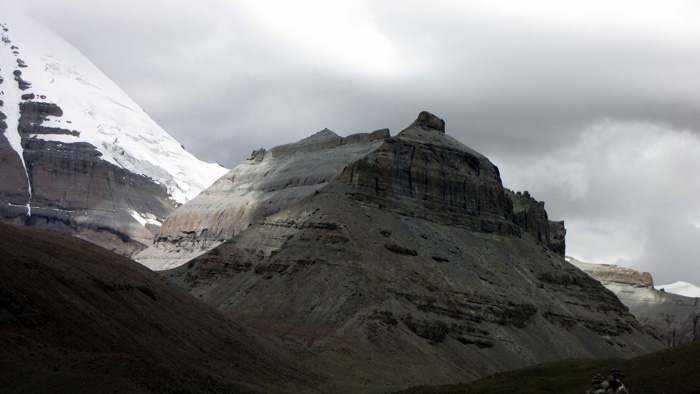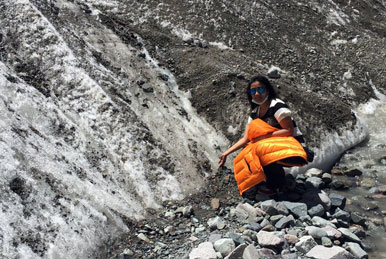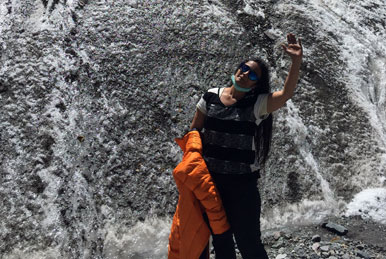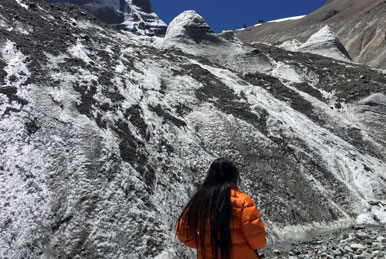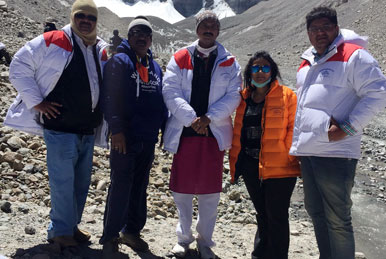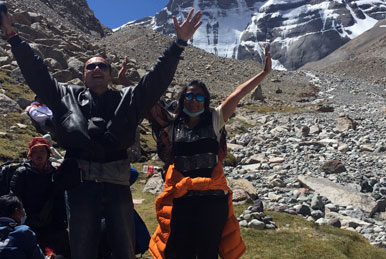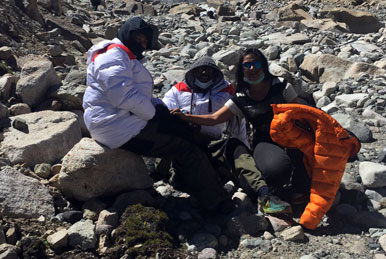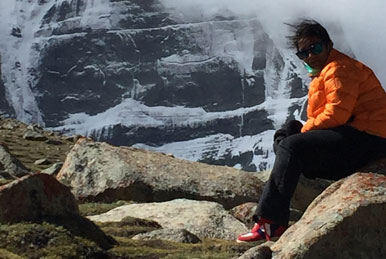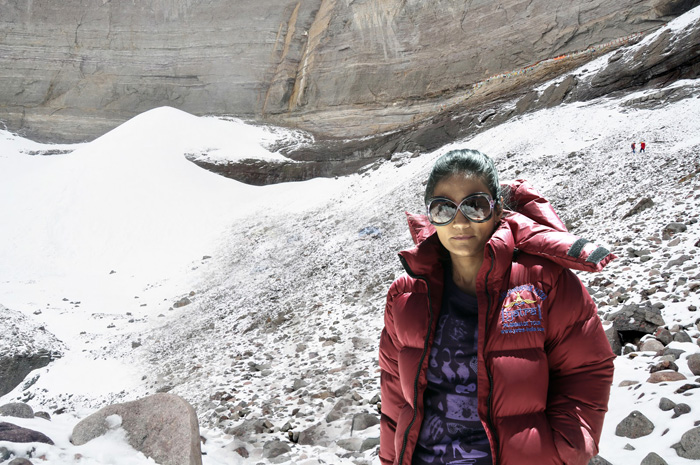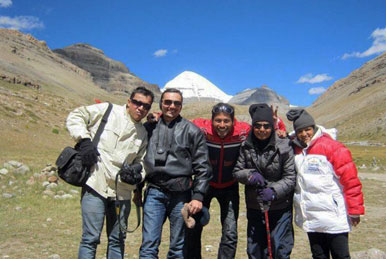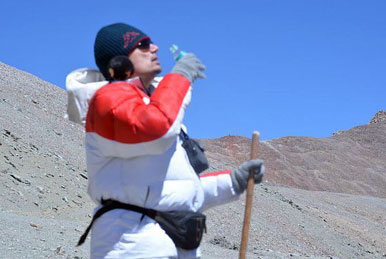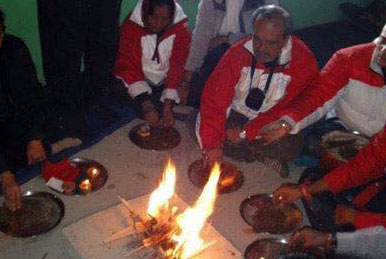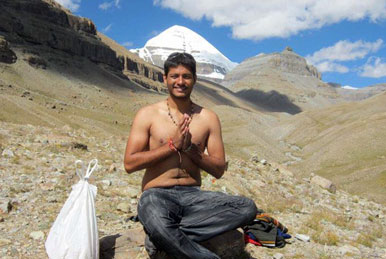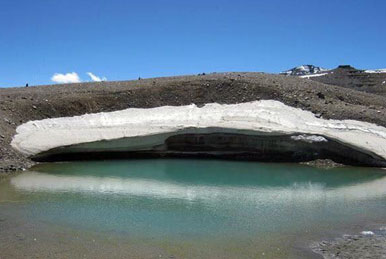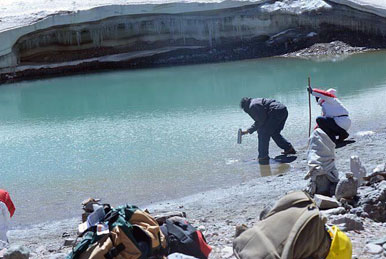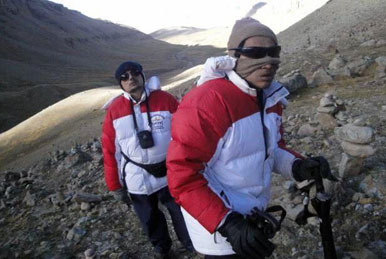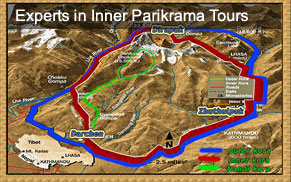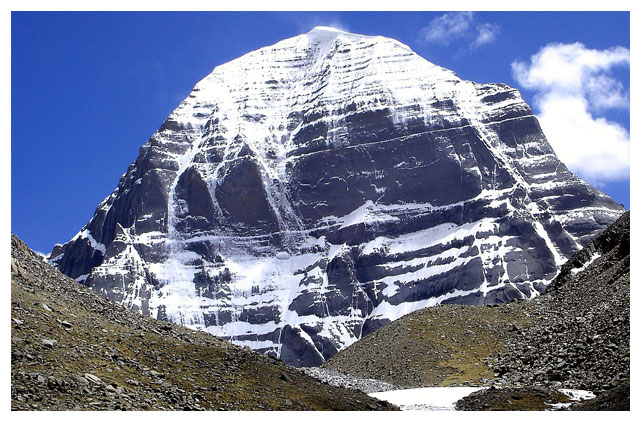
Hindus cross the frozen mountain passes of India and Nepal to circle the peak that is Lord Shiva�s throne and bathe in the lake created from the manas (mind) of Brahma. Buddhists journey from Nepal, Bhutan, Ladakh, Mongolia and every corner of Tibet to this holiest of mountains they call Kang Rinpoche. Jainism knows Kailash as Mount Astapada. Atop the summit, the religion's founder, Rishabhanta, gained spiritual liberation. And to the Bonpo, followers of Tibet�s old pre-Buddhist beliefs it is the �Nine - Storey Swastika Mountain�, the mystic �soul� of the entire region. Each holds different beliefs, each sees different Gods, but the underlying reality is the same.
Manasarovar, the lake born from the mind of Brahma, is among the most ancient and holy of Hindu pilgrimage sites. Hindu legend tells of twelve Rishis, wise 'Seers' of pre-Vedic times who retreated to this remote region for meditation and prayer. They stayed many years performing penances and austerities, and were awarded a vision of Shiva and Parvati, the divine Lord and Lady of Kailash. But still they lacked, in this dry land, a suitable place to perform the daily ablutions required of devout Hindus. The Rishis prayed to Brahma so that they might fulfill their duties. From the infinite depths of his all-encompassing mind Brahma created Manasarovar. Manasarovar's clear waters are said to possess miraculous healing properties.
According to ancient Hindu folkfore, it was Brahma - the Creator, who himself created Manasarovar and the divine Jambu tree, which though invisible to the human eye, grows in the centre. It is for this reason that the world was called Jambudwipa by the ancients; and it is said that because of the fruits of this divine tree that the waters of the Manasarovar have turned into a life - giving elixir! Manasarovar's clear waters are said to possess miraculous healing properties.
'When the earth of Manasarovar touches anyone's body or anyone bathes in the lake, he shall go to the Paradise of Brahma, and he who drinks its waters shall go to the heaven of Shiva and shall be released from the sins of a hundred births. Even the beast who bears the name of Manasarovar shall go to the paradise of Brahma. Its waters are like Pearls.' (The Ramayana).
The pilgrimage to Kailash and Manasarovar has always been considered the most difficult in Asia. The distances seem unending. The weather is harsh. The temperature could soar to 40 Degrees C and drop to 0 Degrees just in a matter of a few hours. Supplies are virtually non-existent. The pilgrim has to undergo extreme hardship under extreme temperatures. The terrain is not very friendly either. Nevertheless, pilgrims come from all parts of the world, defying all hardships. They trek for 53 km around Kailash and 90 km around Manasarovar at altitudes between 15,000 - 19,000 feet above sea level.
Mt. Kailash has long been an object of worship for four Major religious, for Hindu, it is domain of Shiva, It is also the abode of samvara-a multiarmed, wrathful deity worshipped in the chakrasamvara Tantric cycle of Tibetrian Buddhism. The joins of India also reverse the mountain as the site at which the first of their saints emancipated. And in the ancient Bon religion of Tibet, Kailash was the secred nine storeys Swastika Mountain, upon which the Banpo founder Shenrab alighted from haven. The 53 Km. Kailash circuit is the holist of all-Hindu as well as Buddist pilgrimages and the beacon, which draws most traveller to western Tibet. It is said that a single Parikarma erases the accumulated sins of a lifetime, while 108 cicurmbulation will achieve Salvation.
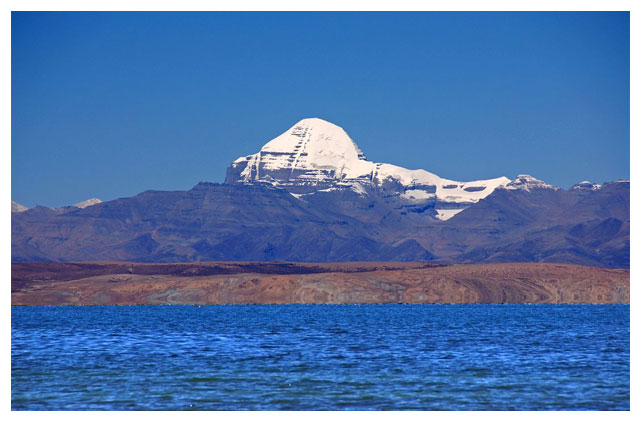
The Inner Kora (circuit) or circumambulation of Mount Kailash from a very close distance, is certainly one of the most harshest pilgrimages of all. This involves a 34 km. journey on foot around the Holy Mountain, at 19,000 feet above sea-level. Here the landscape is entirely made up of rock, crevices, snow and ice. Apart from two small monasteries no humans live along the inner Kora region. It is said that one can do the inner Kora of Mount Kailash only after completing 13 outer Koras. It is a belief that during the Year of the Horse one can do an Inner Kora after doing only one Outer Kora instead of the customary 13. Very few people have attempted to do the inner Kora. Some of them have not returned. The entire Kailash - Manasarovar region is dotted with ancient Buddhist monasteries. Many of these are uninhabited.
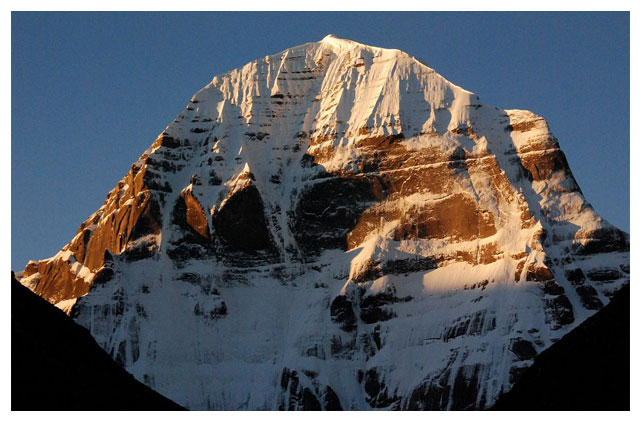
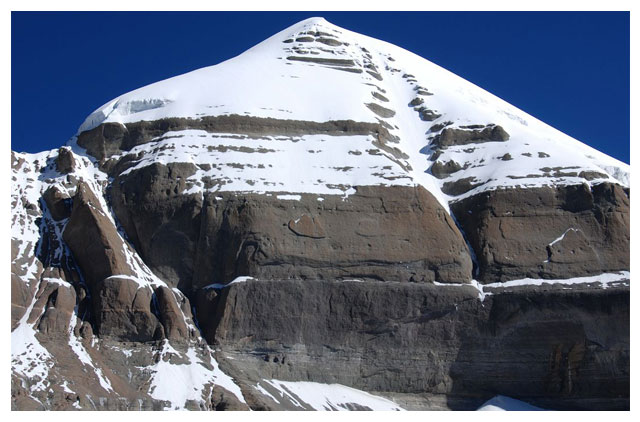
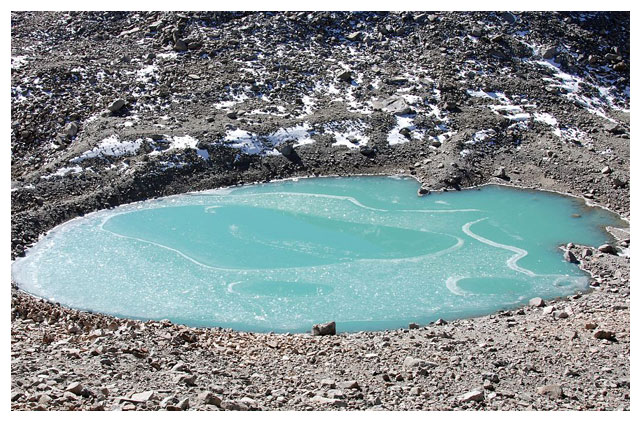
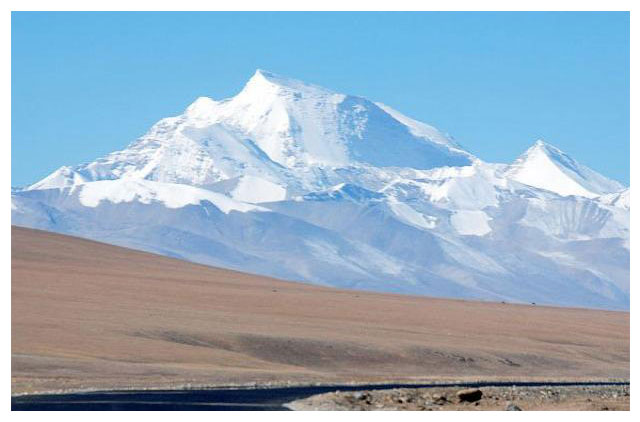
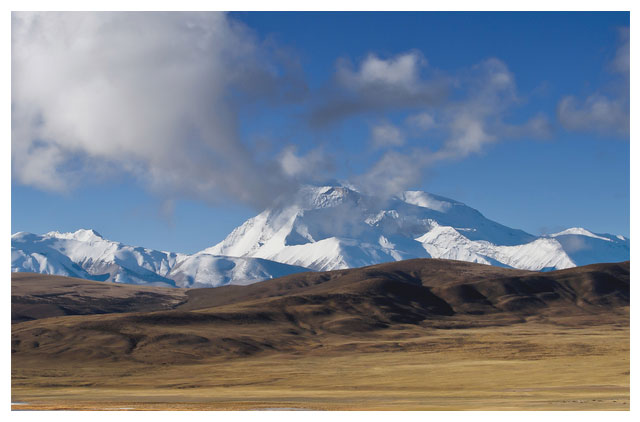
PASHUPATINATH TEMPLE
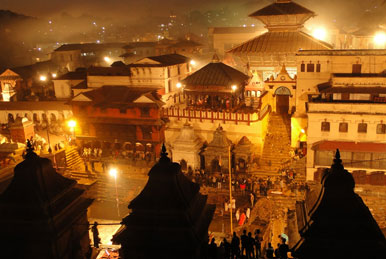
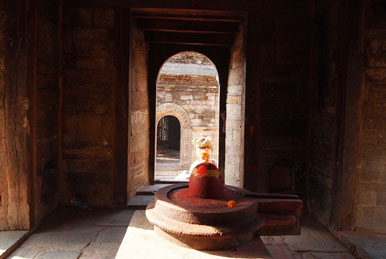
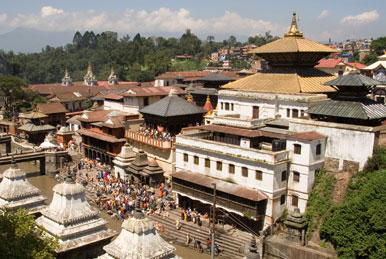
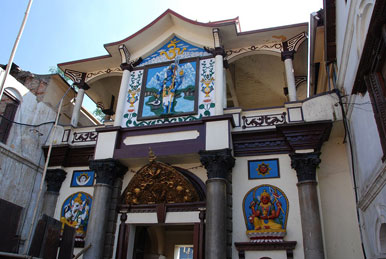
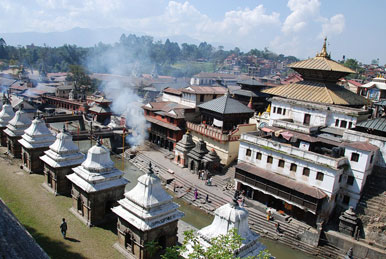
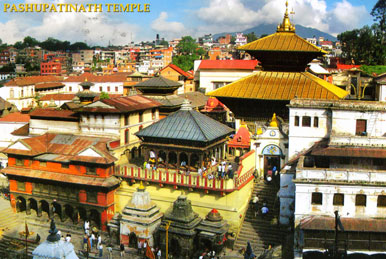
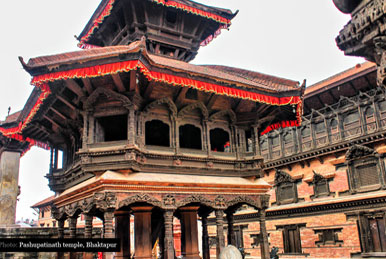







Pashupatinath Temple is one of the most significant Hindu temples of Shiva in the world, located on the banks of the Bagmati River in the eastern part of Kathmandu, the capital of Nepal. The temple serves as the seat of the national deity, Lord Pashupatinath. The temple is listed in UNESCO World Heritage Sites list. The temple is one of the 275 Paadal Petra Sthalams (Holy Abodes of Shiva) on the continent. Over the past times, only born Hindus were allowed to enter the temple. Others could look at it from other side of the river. However, the norms have been relaxed due to many incidents. If the individual is destined, he/she takes and completes the journey to reach these footsteps without any resistance or obstructions along the way, is believed to be under loving grace of Rudra. It is final stage of harsh penance. Thus, the slave (pasu - the human condition) becomes the master (pati - the divine condition). It is regarded as the most sacred among the temples of Shiva (Pashupati). Kotirudra Samhita, Chapter 11 on the Shivalingas of the North, in Shiva Purana mentions this Shivalinga as the bestower of all wishes.
GAURIKUND
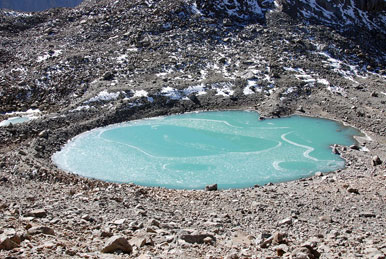
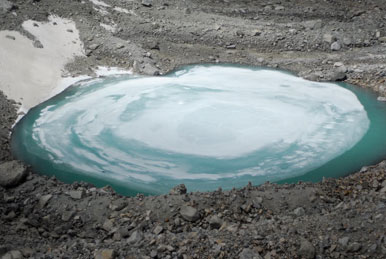
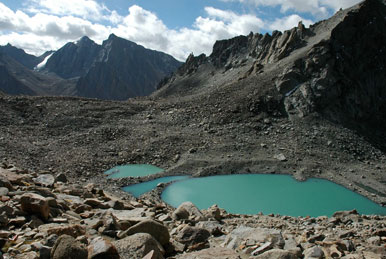
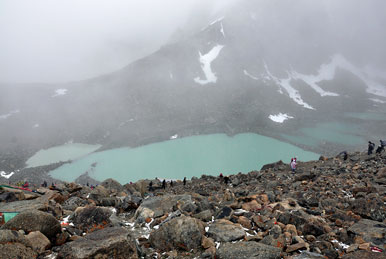
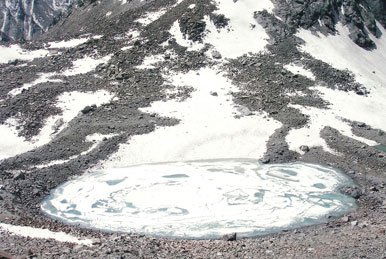
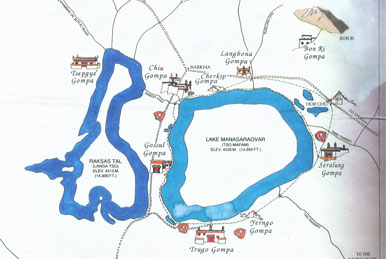
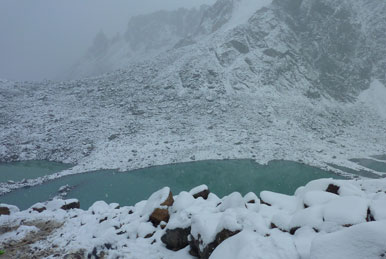







Gauri Kund, a water body that is also known as the Lake of Compassion, lies on the way while Siwasthalgoing on downwards from Dolma - La (Dolma Pass). This steep descent from Dolma Pass is a wonderful lake which is at an altitude of 5608m. As per Hindu mythology, there is a fascinating tale about Gauri Kund and has been described in legend �Shiva Purana�. The lake is also famous as �Parvati Sarovar� as this was the place where goddess Parvati had acquired her son Ganesha (Elephant headed God). Goddess Parvati had formed an image of Ganesh from the soap lather on her body and breathed life into it. She placed Ganesha at the entrance of her home as her janitor to prevent anyone from entering while she was bathing. Now Lord Shiva happened to return at this point of time and was stopped by Ganesha. Offended by this disrespectful act from Ganesha, Lord Shiva cut off the boy's head. Pravati was grief-stricken by seeing it and insisted that the boy needs to be brought back to life. Lord Shiva took the head of a wandering elephant and placed it on the body and life was restored and Parvati had her son back.
RAKSHAS TAL
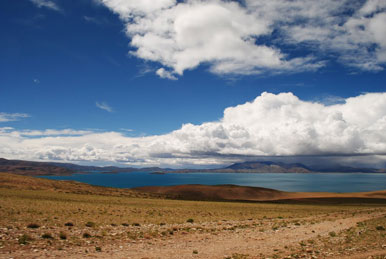
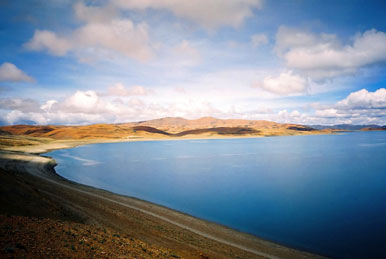
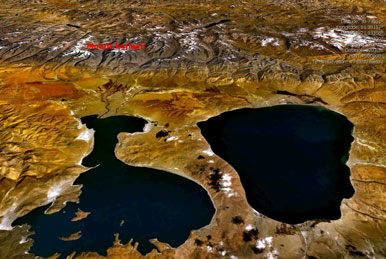
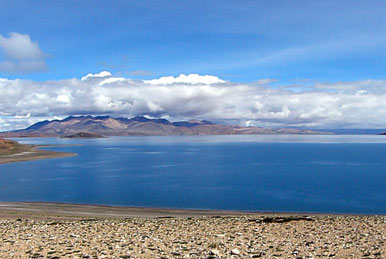










Lake Rakshastal is a lake in Tibet, lying just west of Lake Manasarovar and south of Mount Kailash. [1] The Sutlej River originates at Rakshastal's northwestern tip. Despite its close proximity to Lake Manasarovar (about 3.7 kilometres or 2.3 miles), Lake Rakshastal does not share the historic religious significance of its eastern neighbor.
The name of the lake literally means "lake of the demon" in Sanskrit. It is also known as Ravana Tal, as it is considered to be the place of severe penance by Ravana, the demon-like egoistic King of Lanka in Hindu theology .
[2] In Buddhism, Lake Manasarovar, which is round like the sun, and Rakshastal, shaped as a crescent, are respectively regarded as "brightness" and "darkness". Its salty water, in stark contrast to the fresh water of Lake Manasarovar, results in there being no aquatic plants or fish, and is considered poisonous by locals.
There are four islands in Rakshastal, named Topserma (Dose), Dola (the two biggest), Lachato (Nadzhado), and Dosharba.[3] The islands are used by local people as winter pastures for their yaks.
POOJA AT MANSAROVAR
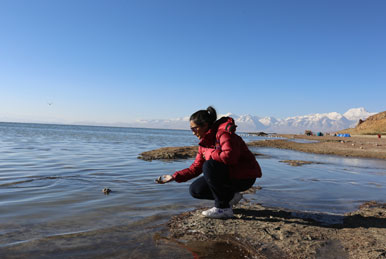
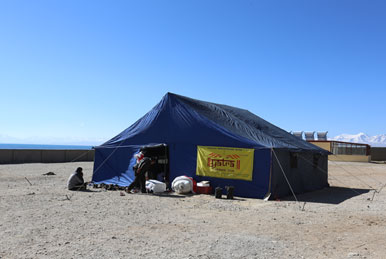
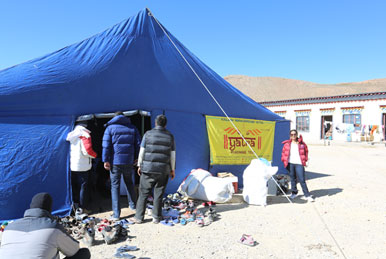











All the yatris wake up early morning and start preparing for the much awaited Homa Puja. In front was the Manasarovar Lake and to the left side we could see Mount Kailash and that was the only mountain to be seen there and to our right was Mount Gurla Mandhatha. The sight was amazing and beautiful so very grand, pristine, and majestic, awe inspiring there HE stood with the blue sky in the background with ITS white peaks. The whole place was so beautiful, serene and peaceful.
YAM DWAR
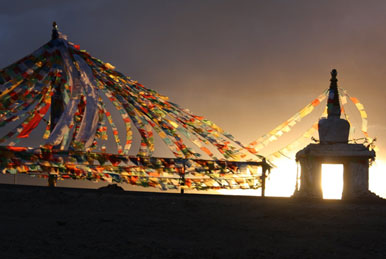
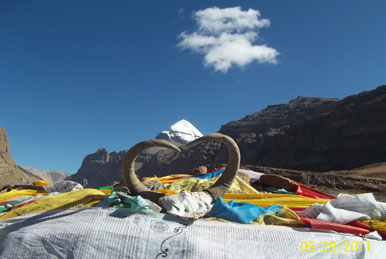
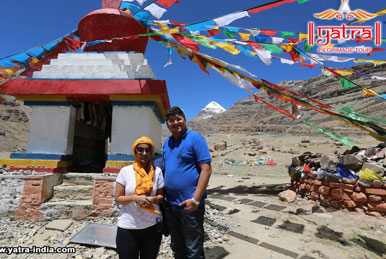
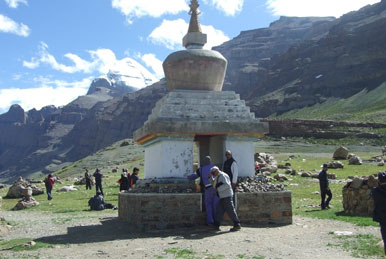
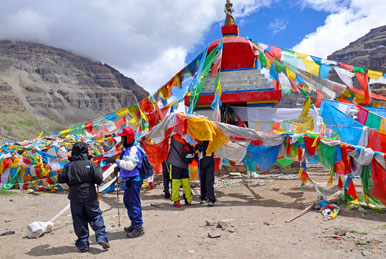









Yam Dwar is situated in Tarboche which is approximately 30 minutes drive from Darchen. The exact meaning of the Yam Dwar in Hindi lingo is �the gateway of the God of Death�. It is the initial point of circumambulation of Mount Kailash. Known as Chorten Kang Ngyi which means two legged Stupa in Tibet.
ASHTAPAD
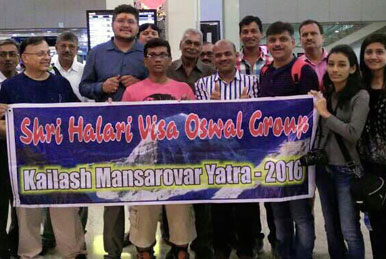
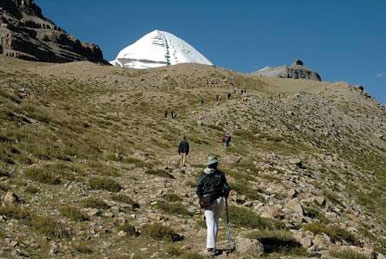
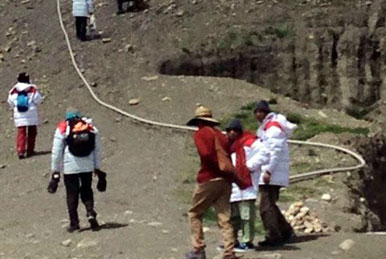
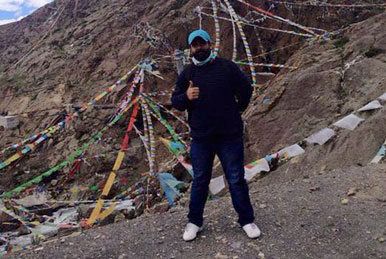
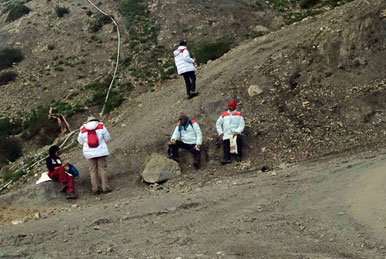
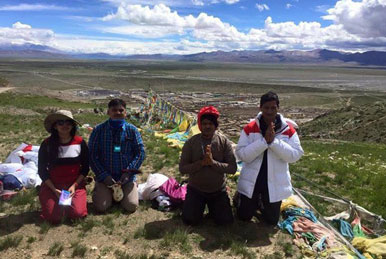
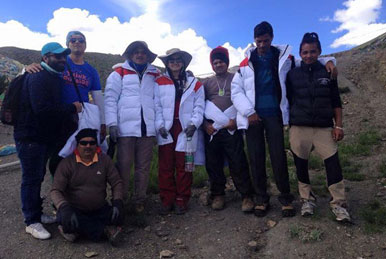
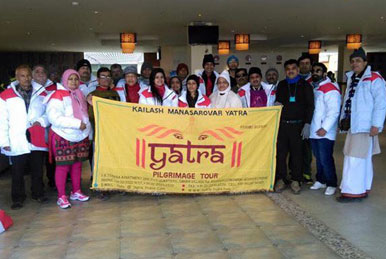








Location at a height of 17000ft, asthapad is the bottom of mt. kailash and one of the main holy places for the hindus and buddhists . It is also considered a major jain tirths as the first of the 24 jain tirthankara "shri adinath bhagwan" had attained salvation (nirvana) at this place. The literal meaning of siwasthal asthapad is "eight steps" as astha means eight and pad means steps in sanskrit and that"s how the place derived its name.
IMPORTANT LOCATIONS









KAILASH MANSAROVAR YATRA
FIND US ON FACEBOOK
VIDEO CHANNEL



